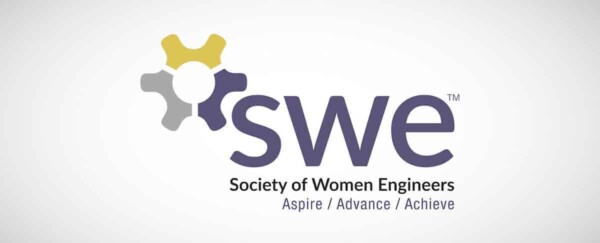New Research and Perspectives: Winter 2016
This article appears in the Winter Issue of SWE Magazine.
Moving the focus from the individual to the social group offers novel and promising tools to help ensure the success and retention of entry-level women engineers. In recent years, SWE has endorsed and partnered with several researchers who focus on women’s lack of advancement in the engineering profession.
In early 2015, SWE agreed to collaborate on a research project and report authored by Brian Rubineau, Ph.D., assistant professor of organizational behavior at McGill University. The research seeks to examine the ways peers, or near-peers (peers who are close to our social, professional and/or age level), may be used as a tool to help women succeed in engineering and technology when transitioning from school to work. Within the report, funded by the Canadian government, Dr. Rubineau notes that the paucity of new policy ideas is part of the reason little progress has been made integrating women into male-dominated professions such as engineering. Much of the report synthesizes data from years of research on the impact that peer relationships have on women’s persistence in science, technology, engineering, and mathematics (STEM) careers.
Dr. Rubineau, who has spoken several times before SWE’s Corporate Partnership Council, titled his report “Leveraging Peers in the School-to-Work Transition for Women in STEM.” He outlines practical, simple interventions that can be made by organizations to promote women’s success in STEM careers. For example, employers can use near-peers on the recruiting team who reflect the diversity goals of the hiring firm. A more diverse team signals a more welcoming environment. Organizations can also promote referral recruitment and facilitate the social integration of new hires through near-peer social mentoring.
Focus on the team
Dr. Rubineau says he focused on this topic because his own research shows that peers are “very important for the success of all people in their careers, but a lot of the current policies to try to promote women’s participation and success in STEM tend to be individual-focused policies.” Putting this in context, he noted that “Northern American culture tends to be very individual focused, so we tend to underappreciate and underexamine the social explanations for outcomes.”
The report discusses how it is best to “never hire singletons and recommends that employers consider hiring people in groups rather than as individuals.” Supporting this notion, Dr. Rubineau found three strains of research that showed the policy of hiring women within a group from the same university promotes women’s retention in engineering careers and their success in the engineering workplace.
In fact, Dr. Rubineau said he is now trying to identify organizations that would like to partner with him to pilot this policy. “When you identify successful individuals and when you pluck them out of their context that made them successful and you put them in a new environment, their performance is going to go down. That’s not too surprising because a lot of our success is individual, but a lot of our success depends on our social contacts as well,” he said. Dr. Rubineau elaborated, pointing out that “if you hire a team of people, once you move them to a new environment with other people they know, that preserves some of the social capital that’s important for being productive, and performance declines are greatly diminished.”
Integrated teams
In an effort to promote greater gender integration in engineering and STEM-related fields, the report recommends that universities and employers promote task-oriented interactions between men and women in STEM. This involves assigning study partners and project team members as there is a natural tendency for humans to interact with others who look and act like them. In a field such as engineering, men can easily interact with other male engineers, but women tend to interact with women who are nonengineers, and interacting with people outside of engineering tends to reduce women’s persistence in the field.
Dr. Rubineau suggests that one possible intervention at the university level would be “dormitories or living groups that are STEM- or engineering-themed because students tend to use their living groups as their primary social contacts as well. Setting that up helps ensure that the people who are choosing engineering, or STEM more broadly, are likely to have these social contacts, including study partners and project team members who are also engineering majors.”
Additionally, Dr. Rubineau notes that new policies and interventions should strive to be gender neutral and avoid “women-only” programs that foster resistance and backlashes. He said the workplace should also involve fewer head-to-head competitions. Research shows that restructuring competitions toward collective and goal-oriented activities is likely to have gender-integrating benefits.
Next steps
Given the appetite for new policy ideas to address the diversity challenges within engineering, universities and corporations should closely consider the content of this report. Many of the interventions outlined are certainly novel, and in order to be successful will likely require a high-level engagement with participating individuals and organizations. In 2016, SWE will work with Dr. Rubineau to share results of the report with organizational partners and the broader community. For a copy of the report, please contact learning@swe.org.
By Peter Finn
SWE Deputy Executive Director and Chief Learning Officer
Author
-

SWE Blog provides up-to-date information and news about the Society and how our members are making a difference every day. You’ll find stories about SWE members, engineering, technology, and other STEM-related topics.







